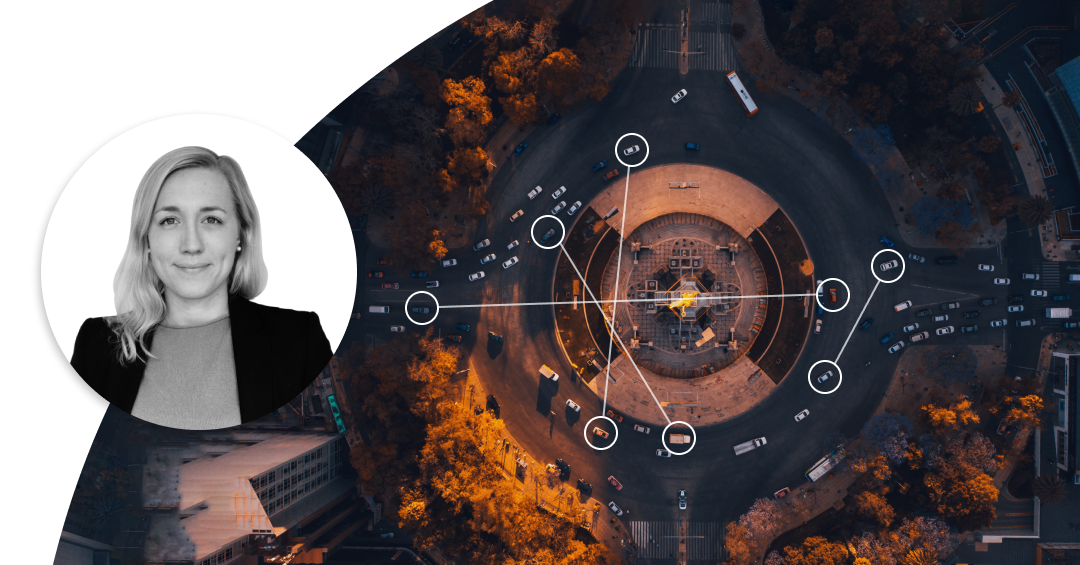Understanding pattern profiling in driver risk management

AI is replacing the measurement of driving events with pattern recognition
Harsh acceleration, braking and cornering, as well as speeding, are widely considered the key indicators of driver risk. And, because such driving “events” have become synonymous with the measurement of driver risk, it can be difficult to understand how risk can be analyzed without them. With artificial intelligence (AI) pattern profiling, it can. And it can deliver deeper risk insights than ever before.
Currently, most basic telematics solutions work by recording pre-defined driver events. Such solutions take measurements when events take place, but don’t analyze what happens during the remainder of the drive. While this can determine risk proxies, it doesn’t directly correlate with actual outcomes. With AI pattern profiling, driver behavior is continuously collected and analyzed. The result is a complete overview of risk in real-time.
How does pattern profiling work?
Put simply, pattern profiling uses machine learning to identify patterns in data. AI pattern profiling in driver risk management works in a similar way to facial recognition. Instead of comparing data to a database of known faces, it compares it to a database of known vehicle trips, and their outcomes. At Greater Than, our database has identified over 7 billion different ways to drive a car. This extensive insight enables us to identify patterns in behavior to assess the risk of a crash occurring.
Because our database is trained with real-world trips involving insurance “claims” and “no-claims”, we can also match claims type. This means that, as well as crash risk, we can also predict crash type.
How many times does pattern AI analyze driving risk during a trip?
Let’s start with traditional telematics. Typically, a driver event – such as a harsh maneuver or speeding – will trigger the analysis. An average telematics system is likely to analyze 150 data sets per hour.
At Greater Than, our pattern AI measures approximately 3.6 billion data sets per hour. This is around 24,000,000 more times per hour than traditional telematics. The result is a DriverDNA for the whole trip, rather than “snapshots” of the trip.
How does pattern profiling differ from basic telematics?
Basic telematics solutions measure driver safety in terms of events. These are often combined with lagging indicators such as license violations and crash history to determine driver risk. Often, risk level is re-evaluated after every trip, adjusted to reflect the events that have taken place during the trip.
Greater Than has conducted extensive research to determine the relationship between driving events and crashes – and has found none of relevance. That’s why we’ve taken driver risk assessment to the next level. Our machine learning examines every second of driving. Instead of taking a “reflective” view on risk, our AI continuously analyzes driver risk in real-time. This includes driving behaviors that are both positive and negative – and behaviors that are not “extreme” enough to be recorded as events by basic telematics.
What patterns is Greater Than’s AI looking for?
At Greater Than, our AI is trained to identify, correlate, and build patterns based on several different data points, such as speed, energy consumption and geographical position. And GPS data is all that is needed to perform a complete risk analysis.
In parallel with the risk analysis, our AI is continuously trained with new damage data, level of saved CO2 emissions, and fuel consumption, which further sharpens the algorithms and makes it possible to obtain even more accurate analysis in the broader spectrum.
What are the key benefits of pattern profiling?
Anyone using or managing GPS data can benefit from the addition of pattern profiling. Because pattern AI can layer onto existing solutions, it can provide deeper risk insights and real-time analysis of driving data.
Within insurance, pattern profiling facilitates the individualized pricing of premiums, delivering unbiased underwriting. It also helps insurers increase competitiveness in a challenging market, by predicting the profitability of an entire portfolio.
Within driver risk management, pattern profiling also has many potential uses. It provides a complete real-time overview of risk, helping fleets take appropriate “predict and prevent” action, such as targeted training where it’s most needed. The accurate measurement of CO2 emissions supports a fleet customers’ safety and sustainability goals and can help them access lower insurance costs.
How easy is it to get started with pattern profiling?
It couldn’t be easier to get started. All that’s needed is 1 km of driving data collected via API. Read more about our AI and how to get started.
Contact Greater Than or book a meeting to discover how your business could benefit from pattern profiling.

